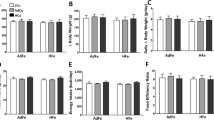Abstract
Wilson’s disease carriers constitute 1% of the human population. It is unknown whether Wilson’s disease carriers are at increased susceptibility to copper overload when exposed to chronically high levels of ingested copper. This study investigated the effect of chronic excess copper in drinking water on the heterozygous form of the Wilson's disease mouse model – the toxic milk (tx) mouse. Mice were provided with drinking water containing 300 mg/l copper for 4–7, 8–11, 12–15 or 16–20 months. At the completion of the study liver, spleen, kidney and brain tissue were analyzed by atomic absorption spectroscopy to determine copper concentration. Plasma ceruloplasmin oxidase activity and liver histology were also assessed. Chronic copper loading resulted in significantly increased liver copper in both tx heterozygous and tx homozygous mice, while wild type mice were resistant to the effects of copper loading. Copper loading effects were greatest in tx homozygous mice, with increased extrahepatic copper deposition in spleen and kidney – an effect absent in heterozygote and wild type mice. Although liver histology in homozygous mice was markedly abnormal, no histological differences were noted between heterozygous and wild type mice with copper loading. Tx heterozygous mice have a reduced ability to excrete excess copper, indicating that half of the normal liver Atp7b copper transporter activity is insufficient to deal with large copper intakes. Our results suggest that Wilson’s disease carriers in the human population may be at increased risk of copper loading if chronically exposed to elevated copper in food or drinking water.
Similar content being viewed by others
References
Allen KJ, Buck NE, Cheah DMY, et al (2006) Chronological changes in tissue copper, zinc and iron in the toxic milk mouse and effects of copper loading. Biometals 19:555–564
Allen KJ, Cheah DMY, Wright PFA, et al (2004) Liver cell transplantation leads to repopulation and functional correction in a mouse model of Wilson’s disease. J Gastroenterol Hepatol 19:1283–1290
Commission on Life Sciences. 2000 Copper in drinking water. Washington: National Academy Press; 1–147
Delatycki MB, Allen KJ, Nisselle AE, et al (2005) Use of community genetic screening to prevent HFE-associated hereditary haemochromatosis. Lancet 366 314–316
Lagos G (1997) Population exposure to copper in drinking water. Copper, Report of an International meeting. In: Moore MR, Imray P, Dameron C, Callan P, Langley A, Mangas S, (Eds.), National Environmental Health Forum Monograph. Brisbane, Department of Human Services, pp. 48–54
Loudianos G, Zappu A, Magli O, et al. 2005 Feasibility of neonatal Wilson disease screening by mutation analysis. In: 38th Annual Meeting of the European Society of Paediatric Gastroenterology, Hepatology and Nutrition, Porto, Portugal: p. 6
Michalczyk AA, Rieger J, Allen KJ, Mercer JF, Ackland ML (2000) Defective localization of the Wilson disease protein (ATP7B) in the mammary gland of the toxic milk mouse and the effects of copper supplementation. Biochem J 352:565–571
Olivares M, Araya M, Pizarro F, Uauy R (2001) Nausea threshold in apparently healthy individuals who drink fluids containing graded concentrations of copper. Regul Toxicol Pharmacol 33:271–275
Olivares M, Uauy R (1996) Limits of metabolic tolerance to copper and biological basis for present recommendations and regulations. Am J Clin Nutr 63:846S–852S
Powell EE, Ali A, Clouston AD, et al (2005) Steatosis is a cofactor in liver injury in hemochromatosis. Gastroenterology 129:1937–1943
Rauch H (1983) Toxic milk, a new mutation affecting copper metabolism in the mouse. J Hered 74:141–144
Scheinberg IH, Sternlieb I (1996) Wilson disease and idiopathic copper toxicosis. Am J Clin Nutr 63:842S–845S
Schosinsky KH, Lehmann HP, Beeler MF (1974) Measurement of ceruloplasmin from its oxidase activity in serum by use of o-dianisidine dihydrochloride. Clin Chem 12:1556–1563
Theophilos MB, Cox DW, Mercer JF (1996) The toxic milk mouse is a murine model of Wilson disease. Hum Mol Genet 5:1619–1624
Turnlund JR, Jacob RA, Keen CL, et al (2004) Long-term high copper intake: effects on indexes of copper status, antioxidant status, and immune function in young men. Am J Clin Nutr 79:1037–1044
Turnlund JR, Keyes WR, Kim SK, Domek JM (2005) Long-term high copper intake: effects on copper absorption, retention, and homeostasis in men. Am J Clin Nutr 81:822–828
Voskoboinik I, Greenough S, La Fontaine S, Mercer JF, Camakaris J (2001) Functional studies on the Wilson copper P-type ATPase and toxic milk mouse mutant. Biochem Biophys Res Commun 281:966–970
Yuzbasiyan-Gurkan V, Johnson V, Brewer GJ (1991) Diagnosis and characterization of presymptomatic patients with Wilson’s disease and the use of molecular genetics to aid in the diagnosis. J Lab Clin Med 118:458–465
Acknowledgments
We are grateful to the Disease Models Group (MCRI) for their assistance with mouse husbandry. KJA is the recipient of an NHRMC clinical Career Development Award and a Barry Young Cardiovascular and Metabolic Fellowship from the Royal Australasian College of Physicians.
Author information
Authors and Affiliations
Corresponding author
Rights and permissions
About this article
Cite this article
Cheah, D.M.Y., Deal, Y.J., Wright, P.F.A. et al. Heterozygous tx mice have an increased sensitivity to copper loading: Implications for Wilson’s disease carriers. Biometals 20, 751–757 (2007). https://doi.org/10.1007/s10534-006-9038-7
Received:
Accepted:
Published:
Issue Date:
DOI: https://doi.org/10.1007/s10534-006-9038-7




